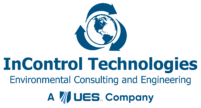InControl Technologies is involved in the design, implementation, and continuous operation of several environmental remediation projects, which range from simple groundwater extraction and treatment to full-scale multi-technological sites. Through risk-based assessments with cost-effective remediation technologies, we expertly and safely convert contaminated sites into useful properties. Our extensive remediation experience in the restoration of industrial and commercial land. We have performed remediation services across the state of Texas as well as throughout the country; we are knowledgeable of, and strictly follow, all applicable regulations and protocols.
The following is a list of technologies and methods we commonly use in the remediation process:
Pump and Treat
InControl Technologies has designed and implemented numerous groundwater extraction systems for remediating sites such as dry-cleaning facilities, petroleum storage tank sites, terminals, pipelines, and chemical facilities. Groundwater extraction systems employ a variety of technologies including electrical and pneumatic pumps, product skimming, and in-well separation. Our remediation systems include treatment options such as activated carbon, air strippers, and product separation.
Soil Vapor Extraction
Our professionals have utilized soil vapor extraction technologies at several dry-cleaning sites to remove perchloroethylene from soils. The soils just below the concrete slab of the buildings tend to be highly permeable; therefore, this technology has been successful in reducing source area concentrations to safe levels according to state of Texas standards. The effectiveness of soil vapor extraction is primarily limited to the nature and extent of the impacts in the shallow soil layer. In addition, we treat the off-gas from the soil vapor extraction with activated carbon.
Dual-Phase High-Vacuum Extraction
In areas with low permeability soils, standard groundwater extraction technologies, such as pump and treat, are not cost-effective alternatives considering the extensive timeline required to achieve target cleanup goals. Therefore, InControl Technologies utilizes dual-phase high-vacuum extraction to improve the recoverability of the contaminants. Typically, the high-vacuum extraction system is coupled with a variety of vapor-phase treatment options, such as activated carbon, regenerative carbon, or thermal oxidation. InControl Technologies designs and installs the systems, varying the sizes from small mobile mounted units for short term programs, to large-scale fully automated units.
Chemical Oxidation
As an advanced technology for remediating halogenated organic compounds, including various chlorinated solvents, InControl Technologies has developed and implemented chemical oxidation at several dry-cleaning operations. Chemical oxidation is a cost-effective alternative to many of the previously identified options. On the project site, chemicals are injected directly into the subsurface to react with organic chemicals. Chemical oxidation reduces the higher concentration material and concurrently produces an oxygen-rich groundwater zone. This is an ideal environment for selective strains of microbes to continue to degrade chlorinated solvents under aerobic conditions successfully.
Ex-situ and In-situ Soil Treatment
Through ex-situ and in-situ soil treatment technology, soil additives are applied to reduce chemical concentrations in the soil prior to disposal or to reduce the in-place concentration to meet site cleanup goals. InControl Technologies has exercised this option to remove the toxicity characteristic from various hazardous soils, which significantly reduced the cost of disposal; ex-situ and in-situ soil treatment is an alternative cost-effective option at our smaller project sites.
Monitored Natural Attenuation
Although the monitored natural attenuation method is often construed as a passively observational technology, the criteria required to demonstrate its applicability is quite complex and comprehensive. InControl Technologies has developed numerous effective monitored natural attenuation programs for both chlorinated and non-chlorinated organic compounds. Proper establishment of a cost-effective testing regime is the most critical aspect of the monitored natural attenuation program, because poorly designed programs lead to excessive costs or erroneous demonstration of the process.
Enhanced Natural Attenuation
This technology differs from monitored natural attenuation in that nutrient is added to the formation to promote microbial growth in the formation or provide the necessary mechanism to complete the biodegradation process. Technologies evaluated and implemented throughout the process include the use of hydrogen and oxygen releasing compounds and hydrogen gas sparging.
